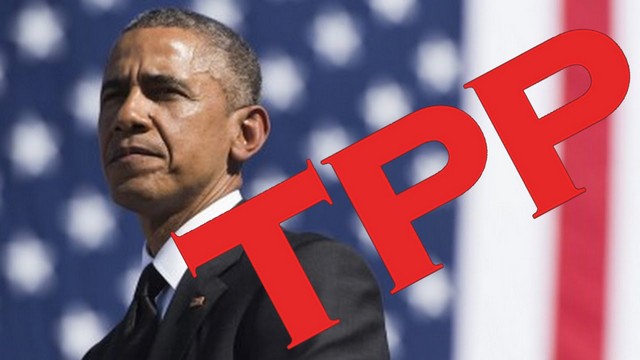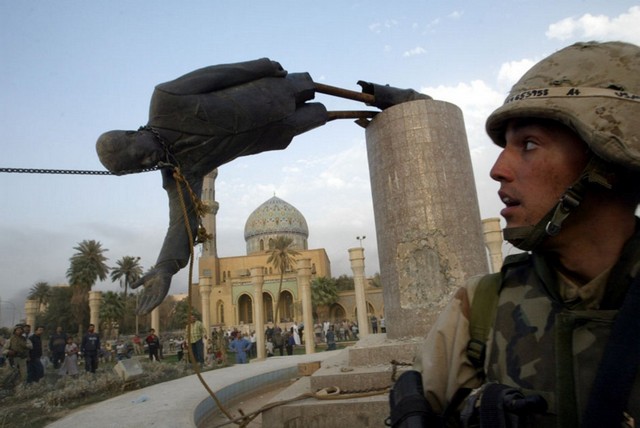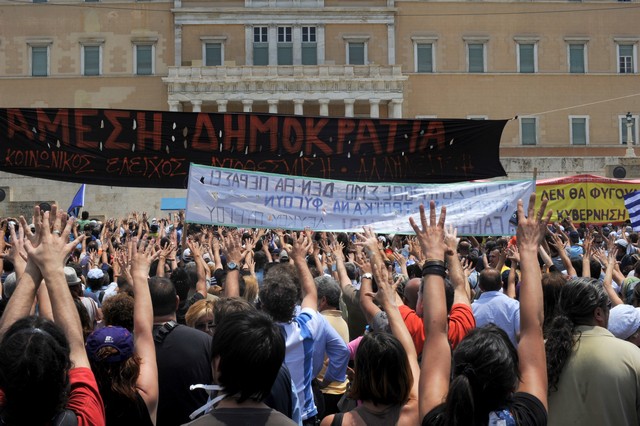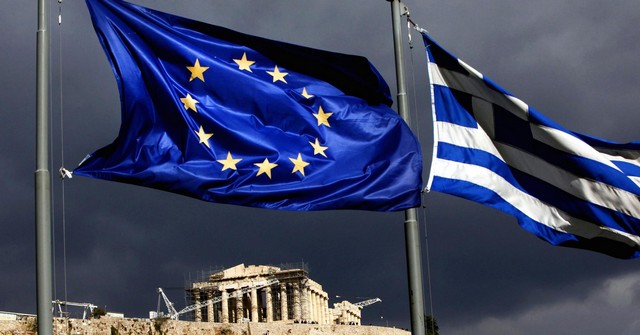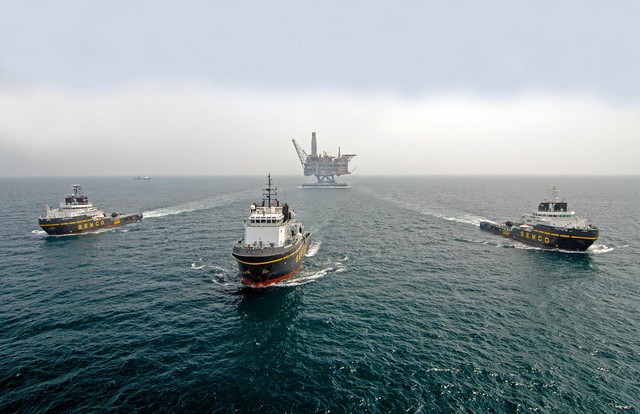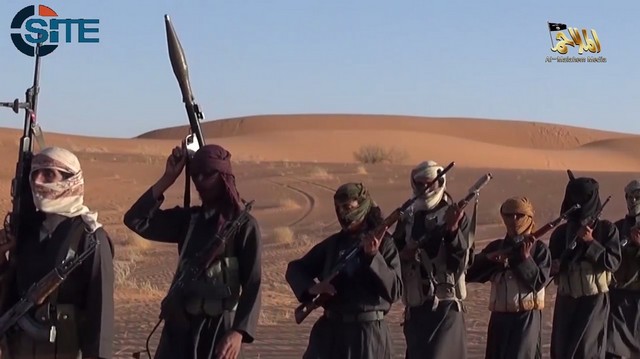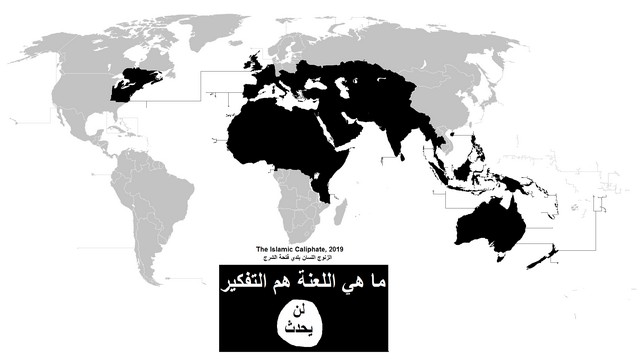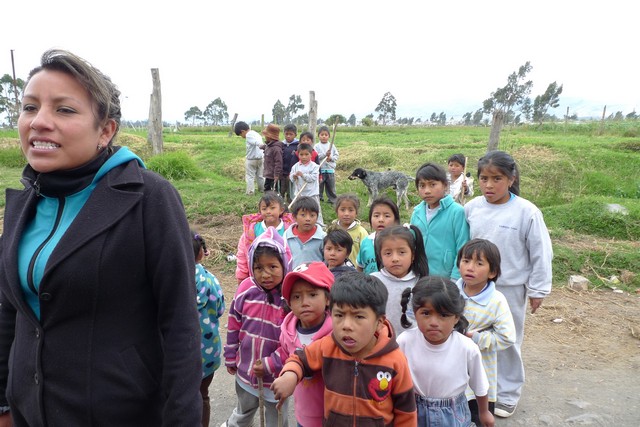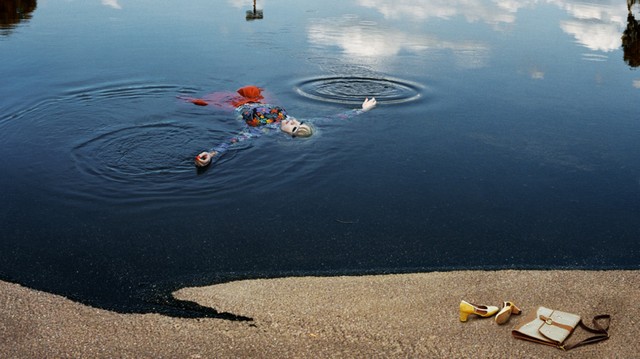By Ghali Hassan
“Western governments no longer hide the fact that they’re using jihadists [a.k.a. foreign terrorists] and NATO forces to overthrew Mouamar al-Qadhafi by using al-Qaeda as its only ground forces; Israel displaced the UN Forces in the occupied Golan Heights, and replaced them with al-Nusra [terrorists]; the international anti-ISIS Coalition allowed Palmyra to fall in order to cause more problems for Syria. But while we can understand Western interests, we fail to grasp why and how the jihadists can serve Uncle Sam in the name of Islam”. Thierry Meyssan, Voltaire Network.
In his recent address to a summit on “countering violent terrorism” in Washington, President Barack Obama repeatedly stressed the need to talk “squarely and honestly” about the “root causes” of terrorism. As a master of deceit, President Obama did his best to cover up the U.S. vicious role in global terrorism. In the Middle East, terrorism is a U.S. tool to justify U.S. imperialist war.
Obama’s big lie was when he told his audience: “The notion that the West is at war with Islam is an ugly lie”. His aim was to deflect attention away from Western government crimes against Muslims and to co-opt those people who buy into his rhetoric. The truth, of course, is that Muslims are not at war with the West. It is the West and Israel that are at war with the Islam and Muslims. Whether in Afghanistan, Iraq, Libya, Syria, Yemen or Palestine, Western-Zionist armies have killed millions of innocent Muslims and left their nations in ruin and mired in violence. If premeditated violent aggression and wanton destruction are not terrorism, what is it? Who is benefiting from terrorism?
Terrorism
First, let’s look at terrorism. Herman and O’Sullivan (1990) show that, “terrorism is mainly an instrument of the powerful, which have the resources to terrorise, a frequent interest in using terror to keep opponents of their rule under control, and the cultural power to define terrorism to exclude themselves and pin the label on their enemies and targets”[1]. The powerful Western governments make no apology for their crimes. We are always the innocent victims of terrorism, never its perpetrator. Today’s enemies and targets are Muslims, home and abroad. Anytime a crime is committed, the accused is depicted as “Islamist” to associate the crime with Muslims and Islam. Modern terrorism is a Judeo-Christian invention exported not only to the Middle East but also around the world by the U.S. and its allies (vassals) including, Israel, Britain, France, Germany and the rest. Terrorism is a Western instrument that has always been used to serve Anglo-Zionist interests. It is a fact that, “in western political culture, it is taken to be entirely natural and appropriate that the ‘Leader of the Free World’ [claimed by successive U.S. regimes] should be a terrorist rogue state and should openly proclaim its eminence in such crimes“, writes Noam Chomsky. It is true that, American ruling elites believe that they have right to terrorise, and inflict suffering on defenceless nations that are no subservient to U.S. imperialist dictates.
A plethora of research on terrorism shows that, the U.S. is the biggest terrorist state in the world, and poses the greatest existential threat to world peace and humanity today. The U.S. is terrorism dinosaur. The fascist state of Israel, U.S. closest ally, comes second. All major terrorist operations originated (planned and financed) in Washington D.C. and Tel Aviv. “While the U.S. perpetually invokes international laws to blame others, it repudiates any life – protective law applied to its actions, or [the criminal actions of] its key ally Israel”, writes John McMurtry, author and fellow of the Royal Society of Canada. As long as the terrorists are serving U.S.-Zionist interests, they will be financed, armed and defended by the U.S. and its allies. The U.S.-Israel proxy terror network, the so-called “Islamic state” is a good example.
ISIS: The Proxy Terror Network
The name “Islamic State” (IS) or “Islamic State in Iraq and Syria” (ISIS), is the brainchild of the U.S. CIA and the Israelis, and is designed to associate (connect) all Muslims and anything Islamic with violence and terrorism. ISIS is a foothold the U.S. keeps in the region to blackmail any nation with independent aspirations.
The U.S. created and nurtured ISIS in Iraq in early 2006 to counter the Iraqi Resistance to U.S. occupation. The U.S. and U.S. allies made it possible for ISIS to traverse international borders – from Iraq to Libya to Syria and to Iraq. ISIS was created, funded and armed by the U.S. and U.S. allies, namely Britain, Turkey, Israel, Jordan, France, Qatar and Saudi-Arabia. In fact, according to a recent Russian Foreign Ministry statement; the “UN Security Council’s al-Qaida Sanctions Committee, the United States, Britain, France, and Jordan have blocked Syria’s request – supported by Russia – to include ISIS terrorist group in the sanctions list as a separate group”. (For more, see Ben Swann, The Origin of ISIS). Western governments and the media have also managed to create a fictitious ISIS leader. The so-called al-Baghdadi was created by the CIA and then described as a “native of Baghdad, a fact reflected in his name”. The NYT reported that al-Baghdadi is a fiction.
By creating ISIS and associated it with Islam and “extremism”, the U.S. and its allies are demonising Muslims and Islam, and justifying U.S.-led aggression in the region to protect Anglo-Zionist interests. In fact, ISIS violence is deliberately criminal and designed to demonise Islam. However, if one compares ISIS violence with U.S.-led Western violence, ISIS terrorists have done nothing compared to the barbaric war crimes committed by the U.S. and its allies in Iraq, Afghanistan, Syria, Yemen, Vietnam, and North Korea.
There is nothing Islamic about ISIS. ISIS is a U.S.-Israel proxy terrorist network of foreign mercenaries collected from various countries around the world. The majority of ISIS terrorists are from Western and U.S.-allied countries. Their main duties are “to wreak havoc and destruction on Syria and Iraq, and distort the name of Islam acting on behalf of their U.S. sponsors. The Washington Post, revealed that, “the flow of foreign fighters [a.k.a. terrorists and mercenaries] making their way to Syria remains constant, so the overall number continues to rise”. In October 2014, the Guardian newspaper obtained a report by the UN Security Council, which finds that 15,000 mercenaries from more than 80 countries travelled to Syria and Iraq to fight alongside ISIS and similar extremist groups. It is a fact that, many of ISIS terrorists are recruited in the West, including Australia, Britain, Canada, France Germany, and the Scandinavian countries. They are leaving and returning with ease. “The Western propaganda offensive encouraged extremists to join in a virtual holy war against Syria. No Australian was detained or deterred from travelling to Syria in the first two years of the crisis. The first few killed were often praised as ‘humanitarian workers’ or victims of the regime’s ‘indiscriminate bombing’”, writes Tim Anderson of the University of Sydney.
ISIS ideology is an Anglo-Zionist ideology designed to distort Islam and depict Islam as a violent religion and justify attacks on Islamic nations and the persecution of Muslims. Hence, Western media and Western politicians frame ISIS violence in a religious dimension. While ISIS uses Islam as a cover, it has nothing to do with religion. The so-called “war on ISIS” is a rebranded open-ended “war on terror” with the same Anglo-Zionist agenda targeting any country. In other words, ISIS is a cover to disguise U.S. imperialist war.
It is a documented fact that ISIS terrorists are trained, armed and financed by the U.S. and U.S. closest allies. In fact, the U.S. and its allies – Turkey, Israel and Jordan in particular – recruited, equipped, trained, and financed ISIS terrorists. In spite of all the pretentious facades in combating these mercenary terrorist forces, the U.S. and U.S. allies have been supporting them all over the Middle East. In a recent speech at Harvard’s Kennedy School of Government, U.S. Vice-president Joe Biden he stated clearly that: “Our allies in the region [Israel, Turkey, Jordan Qatar, Kuwait and Saudi Arabia] were our largest problem in Syria. The Turks were great friends… [and] the Saudis, the Emirates, etcetera. What were they doing?…They poured hundreds of millions of dollars and tens of tons of weapons into anyone who would fight against Assad — except that the people who were being supplied, [they] were al-Nusra, and al-Qaeda, and the extremist elements of [ISIS] who were coming from other parts of the world”. You can’t be serious, Joe? It is unfair to blame the vassals. Your U.S. regime is the world’s biggest sponsor of terrorism. Like al-Qaeda, ISIS wouldn’t exist today as a major force either in Syria or in Iraq if it wasn’t for the U.S. and U.S. allies.
President Obama has just approved funds to train 20,000 ISIS terrorists to mount terrorism attacks against the Syrian legitimate Government. According to Western media, the U.S. and Turkey have signed an agreement to openly train and arm anti Syria’s “moderate rebels”, masquerading as “rebels”, and the majority of whom are members of ISIS. The deal was signed by U.S. ambassador John Bass and a senior Turkish official. The U.S. and its allies are careful not to call ISIS terrorists. A detailed search of Western media show that ISIS is often called, “ISIS fighters”, “ISIS group”, “moderates rebels”, and “Daesh organisation”, but never terrorists because Western allies are not terrorists; they are something else. We know that, there are no such things as “moderate rebels”. According to Alexey Borodavkin, the Russian Federation ambassador to the UN: “Armed groups qualified as ‘moderate’ [by the U.S.] are closely coordinating their activities with terrorist groups”. He added that Syria is facing a “huge army of trained, armed terrorists.”
ISIS serves as the perfect pretext to justify U.S.-Zionist aggression. The U.S. and its allies, namely Australia, Britain, Canada, and France use ISIS to justify domestic repression and imperial rule. The propaganda from both sides shapes not just the perception of the “war on terror,” but on-the-ground conflicts as well. Dissecting the propaganda shows why ISIS is not a grave threat, and how the West uses ISIS to perpetuate a U.S.-sponsored war that shows little sign of ending. ISIS exists as a smokescreen for U.S. war agenda against Syria and Iraq. As Garikai Chengu, a scholar at Harvard University rightly observes: “America is using ISIS in three ways: to attack its [Muslim] enemies in the Middle East, to serve as a pretext for U.S. military intervention abroad, and at home to foment a manufactured domestic threat, used to justify the unprecedented expansion of invasive domestic surveillance”.
It is relevant to note that, the U.S.-led attacks on Iraq and Syria have nothing to do with “defeating” ISIS terrorists. The West alleged efforts to “degrade and ultimately destroy” ISIS are in fact strengthening ISIS and increased their terror. The criminal destruction caused by the terrorists designed to soften Syria for the current U.S.-led attacks on the country. Since the U.S.-led coalition began their “cosmetic” air strikes to “defeat” the terrorists, ISIS went from strength to strength in Iraq and in Syria. The Syrian Arab Army and their Iraqi counterparts bear the brunt of the fighting.
“The U.S. treats the Islamic State like an attack dog, restrained in Iraq where its interests (protection of the Kurdish state and its oil wealth) are threatened but let off the leash in western Iraq and Syria. The U.S. did nothing to prevent the capture of Mosul last year and stood by again when the ISIS terrorists captured Ramadi recently and paraded through the streets in more captured U.S. army pickups. Neither did it take any action to stop ISIS as they streamed across the desert in the direction of ancient city of Palmyra in Syria. In both cases ISIS columns were an open target which could have been obliterated from the air yet nothing was done to stop them”, writes Jeremy Salt of the Bilkent University in Ankara, Tukey. Indeed, oonly when ISIS came close to capture the headquarters of the Kurdish Mafia in Irbil, the U.S. and U.S. allies, including Israel rushed to their defence. The U.S. support for the Kurds is part of the U.S.-Zionist strategy to partition Iraq.
ISIS serves two of U.S.-Zionist objectives: 1) ISIS is used as a U.S.-Israel proxy terrorist force in the war on Syria with the final aim of toppling the Syrian Government – the Libyan model, and 2) ISIS is used to blackmail and compel the U.S.-installed Iraqi government to allow the U.S. to have permanent military presence in Iraq. For example, ISIS was used to intimidate the former Iraqi Prime Minister, Nouri al-Maliki to resign because he was not obedient enough to U.S. colonial diktats. ISIS terrorists are only doing what al-Qaeda under the U.S. command did in Afghanistan in 1980s and then in the former Yugoslavia in the 1990s.
IRAQ
The on-going U.S.-led aggression in Iraq that began in 1991 shows that the U.S.-Zionist project – the complete destruction of Iraq as a unified, strong and prosperous nation – has failed. The U.S. war on Iraq killed more than 3 million Iraqi civilians, most of whom women and children. (For more, see Nafeez Ahmed in MEE, 08 April 2015).
According to the United Nations’ own statistics, every month throughout the 1990s, 6,000 children under the age of five in Iraq were dying from malnutrition and lack of access to simple medicines. Meticulous UN figures show that 1.7 million Iraqi civilians died due to the West’s (U.S.-UK) barbaric economic sanctions regime, half of whom were children. “If the U.S. wants to impose military sanctions on Iraq, let them do it, but don’t deprive our children of milk, health, medicine,” said the then Iraqi Deputy Prime Minister, the late Tariq Aziz. Three senior UN officials resigned in protest, including Denis Halliday, the UN assistant secretary general. At the time, Halliday was serving as the humanitarian coordinator in Baghdad. In his own words, Halliday said: “I had been instructed to implement a policy that satisfies the definition of genocide: a deliberate policy that has effectively killed well over a million individuals, children and adults.” The aim was “to reduce Iraq and Iraqis to the preindustrial age”, as the former U.S. Secretary of State, the violent James Backer threatened to do.
Katherine Hughes, a court watcher with the ACLU observed: “Prior to the 1991 U.S. war, Iraq was a wealthy country, had a First World standard of living. The government of Saddam Hussein provided universal health care and education – including university education – for all Iraqi citizens, [regardless of ethnic or religious affiliation]. There was virtually no illiteracy and the education system and health system were the best in the region. Women enjoyed equal rights and religious minorities were respected.
The second phase of the Iraqi genocide was the 2003 Anglo-American criminal invasion and murderous occupation of Iraq. The international supreme crime culminated in the murder of President Saddam Hussein and the destruction of Iraq as a progressive state. As a consequence of the invasion and occupation, more than 1.5 million Iraqis; the overwhelming majority of them were women and children. The Anglo-American invaders have deliberately destroyed and looted a relatively advanced developing country whose people were largely prosperous. Close to five million Iraqis were displaced by the invasion out of a population of 31 million, and five million Iraqi children became orphans. Women suffered the greatest losses in education, professions, child care, nutrition, and safety. Sexual violence against women and girls in Iraq (and now Syria) has increased exponentially. More than one-fourth of Iraq’s population died, became disabled, or fled the country as refugees. The Americans and their British boodles left Iraq in ruin and in a state of lawlessness.
Before the Anglo-American aggression, Iraq “had the highest level of education in the Middle East. When you point this out you’re accused of being a President Saddam Hussein’s apologist, but Baghdad University in the 1980s had more female professors than Princeton did in 2009; there were crèches to make it easier for women to teach at schools and universities. In Baghdad and Mosul there were libraries dating back centuries. The Mosul library was functioning in the eighth century, and had manuscripts from ancient Greece in its vaults. The Baghdad library, as we know, was looted after the occupation, and what’s going on now in the libraries of Mosul is no surprise, with thousands of books and manuscripts destroyed” with the visible hands of the Anglo-Zionist imperialism (Tariq Ali, LRB, 09 April 2015).
The occupation of Iraq is one of the most destructive acts of terrorism in modern history. Even though Hiroshima and Nagasaki were nuked, the social and political structure of the Japanese state was maintained; although the Germans and Italians were defeated in the Second World War, most of their military structures, intelligence structures, police structures and judicial structures were kept in place, because there was another enemy already in the offing – communism. But Iraq was treated as no other country has been treated before. Indeed, U.S.-led barbaric aggression against Iraq left the region in chaos.
Furthermore, “prior to the 2003 U.S.-Britain criminal invasion, Iraq had no history of extremism. The Kurds had done territorial and political deals; Sunni and Shia had class and sectarian differences, but they were at peace; intermarriage was common. Three years before the invasion, I drove the length of Iraq without fear. On the way I met people proud, above all, to be Iraqis, the heirs of a civilization that seemed, for them, a presence”, writes John Pilger, a rare exception in Western journalism.
In order to completely destroy Iraq as a nation, the U.S. planted the seeds of violence and division in Iraq and incited Iraqis against each other. Furthermore, the U.S. annulled the progressive Iraqi Constitution and replaced it with a U.S.-Zionist crafted constitution which endorses sectarianism and denies women equal rights. The U.S. Occupation forces disbanded the Iraqi Army and security forces and replaced them with U.S.-trained and armed sectarian militias to achieve U.S.-Israel objective of turning Iraq into a divided, subservient and weaker Iraq. The so-called “New Iraqi Army” is under the control of the Pentagon. Hence, the U.S. supply the New Iraqi Army with weapons and Humvees, and the New Iraqi Army passed the weapons and Humvees to ISIS terrorists, and no one blames the U.S. for arming ISIS terrorists. “ISIS is now better armed than the New Iraqi Army. And this all happened with the U.S. support”, said President Vladimir Putin of Russia.
It is a fact that ISIS terrorists invaded Iraq from Syria and Turkey in broad daylight with the full knowledge of the U.S. regime and in full sight of U.S. reconnaissance. If the U.S. and its allies had wanted to destroy ISIS mercenaries, they could have obliterated their convoys of Toyota pickup trucks when they crossed the desert from Syria into Iraq in June 2014.
Commenting on U.S. Defence Secretary Ashton Carter’s comment that, “the Iraqi army shows no will to fight” ISIS terrorists in Ramadi, the Head of Iraqi Parliament’s National Security and Defence Committee, Hakem al-Zameli dismissed the claim as: “unrealistic and baseless.” He said: “The U.S. failed to provide good equipment, weapons and aerial support. The U.S. is trying to deflect the blame”. Al-Zameli also disclosed that the anti-ISIS coalition’s planes have dropped weapons and foodstuff for the ISIS in Salahuddin, al-Anbar and Diyala provinces. In January, al-Zameli underlined that the coalition is the main cause of ISIS’s survival in Iraq. “There are proofs and evidence for the U.S.-led coalition’s military aid to ISIS terrorists through air (dropped cargoes),” he told FARS News Agency (FNA) at the time. “We don’t trust the Americans; they have targeted our forces many times in so-called mistakes,” al-Zameli said. Former U.S. Secretary of States, Henry Kissinger have publicly stated on Fox Business that: ”The Iraqi intelligence sources have claimed that the U.S. military planes have airdropped several aid cargoes for ISIS terrorists and only to those terrorists that cooperate with the Pentagon to help them resist the siege laid by the Iraqi army, security and popular forces”.
On March 29 2015, the U.S. fighter jets struck the positions of Iraq’s popular forces during their fierce clashes with ISIS terrorists near Tikrit, injuring a number of fighters. “The U.S. planes have dropped weapons for the ISIS terrorists in the areas under ISIS control and even in those areas that have been recently liberated from the ISIS control to encourage the terrorists to return to those places,” Coordinator of Iraqi popular forces Jafar al-Jaberi told FNA. “Two coalition planes were also seen above the town of al-Khas in Diyala Province and they carried the ISIS terrorists to the region that has recently been liberated from the ISIS control,” al-Jaberi said. In Tikrit, which has been recently liberated from ISIS terrorists, the U.S.-led coalition has conducted eight airstrikes, but they hit the popular forces’ positions instead of ISIS. ISIS success is U.S.-orchestrated to provide a pretext for a second U.S.-led invasion. The common theme is, “we can’t win against ISIS unless we have troops on the ground”.
The U.S. is playing a game by fuelling both sides to serve its own Zionist interest. It is reminiscent of the Iran-Iraq war when the U.S. openly supported Iraq while at the same time provided weapons to Iran. It is an irony that, most Iraqis today view Iran as their best friend in the war against ISIS terrorists not the U.S. and its allies.
The Obama regime used ISIS to blackmail the former Iraqi Prime Minister, Nouril al-Maliki to resign. Only after al-Maliki has resigned, the U.S. and its allies, including Australia embarked on a military invasion to “save” Iraq from ISIS. It was a pretext to reoccupy Iraq and set the stage for a U.S. colonial dictatorship. Next, it will be Syria.
Syria
Since 2011, a reign of terror has descended on Syria by an array of Western-sponsored foreign mercenaries and terror networks, including ISIS entering Syria from Turkey and Jordan. It is part of the West’s violent “regime change” masquerading as the “Arab Spring”. The criminal “Libyan model” orchestrated by U.S.-NATO armies with UN complicity was to be replicated in Syria. As Carla Stea, an accredited journalist at the UN and the U.S. Department of State, accurately observed: “Had Russia and China not vetoed a number of draft UN Security Council resolutions on Syria, they would have resulted in military attacks against Syria, culminating in the collapse of President Assad’s government, a ‘failed state,’ and no doubt, in the extrajudicial murder of President Assad [and his family], following the pattern of ‘Regime Change’ coveted by U.S./NATO governments” against Iraq and Libya. She continued: “These new draft UN resolutions always masqueraded sanctimoniously as concern for ‘human rights’, in an attempt to obscure and justify the naked and brutal power grabs such draft resolutions actually sought to make possible. But this time, both Russia and China repeatedly vetoed these new draft resolutions, thereby denying UN Security Council authorization for mass murder”. The UN is not only a tool to legitimise U.S.-Zionist aggression, the UN is complicit in U.S.-sponsored terrorist attacks on Syria (for more on the UN complicit role in U.S. war on Syria, see: Tim Anderson, OpEdNews, 29 August, 2012; Eva Bartlett, RT, 04 February 2015).
The U.S. and its closest allies (the so-called “friends of Syria”) have been openly recruiting, training, arming and financing these foreign and terrorists against the Syrian Government. “The ‘covert’ U.S. training [of the terrorists] at bases in Jordan and Turkey began months before President Obama approved plans to begin directly arming the opposition to Syrian President Bashar al-Assad, according to U.S. officials and rebel commanders”, revealed the LA Times on 21 June 2013.
Writing in The Intercept, Glen Greenwald observes: “Now the Obama administration and American political class is celebrating the one-year anniversary of the failed Bomb Assad! Campaign by starting a new campaign to bomb those fighting against Assad—the very same side the U.S. has been arming over the last two years. It’s as though the U.S. knew for certain all along that it wanted to fight in the war in Syria, and just needed a little time to figure out on which side it would fight…. Something very similar happened in Libya: the U.S. spent a decade insisting that a Global War on Terror—complete with full-scale dismantling of basic liberties and political values—was necessary to fight against the Unique Threat of al-Qaeda and ‘Jihadists,’ only to then fight on the same side as them, and arming and empowering them” (Greenwald, The Intercept, August 27, 2014). Greenwald points out that Obama wanted to go to war against Syria just a year ago as a matter of allegedly urgent national security, but was stopped by public opinion, a failed British parliamentary vote, and the intervention of peacemaker “villain” Vladimir Putin.
More than 200,000 innocent Syrians have been killed and another nine million have become refugees inside and outside their country in a U.S. proxy war that only achieved death, destruction and suffering. As Dr Bouthaina Shaaban, an adviser to President Bashar al-Assad told the English Zionist, Robert Fisk: “Right from the beginning of this crisis, I never truly felt that the issue was about President Assad. It was about the weakening and destruction of Syria. There has been so much destruction – of hospitals, schools, factories, government institutions, you name it. I think the Americans take their battles against leaders and presidents – but only as a pretext to destroy countries. Saddam was not the real target – it was Iraq. And it’s the same for Libya now – America told everyone it was about Gaddafi. The real issue is about weakening the Arab armies, whoever they are. When the Americans invaded Iraq, what was the first thing they did? They dissolved the Iraqi army,” followed by the complete destruction of Iraq and the Iraqi society.
Western propaganda is that the ISIS terrorists are against Jews and Christians, but the overwhelming majority of ISIS victims are Muslims in countries considered not aligned with the U.S. and Israel. If ISIS terrorists are truly Islamic, they will try to topple the un-Islamic and murderous dictatorial regimes in Saudi Arabia, Egypt, Turkey, Kuwait, Qatar or liberate Palestine from murderous Israeli occupation. ISIS terrorists, on behalf of their handlers, are destroying and ransacking everything in their path, including Islamic and ancient civilisation cultures just like the U.S.-British invaders did in Iraq. For the Anglo-Zionists, cultures transcend national identity. The past influence the present, and by destroying the past, ISIS are destroying the present and future of the nation as well. Moreover, the U.S. and its allies (namely Israel) are attacking the nations and movements that are fighting against ISIS.
A series of reports to the UN Security Council by the UN Disengagement Observer Force (UNDOF), show that Israel is coordinating with terrorist groups, including ISIS by providing them not only medical care but also other military and ammunition supplies. In addition, Israel provides ISIS and other anti-Syria terrorists with a safe haven – for their tanks and artilleries – along its “border” with Syria in the illegally-occupied Golan Heights. One report reveals that Israel is using the terrorists not only against the Arab Syrian Army, but also to harass and ultimately expel the UN monitors in attempt to prevent any reporting of Israel’s terror activities in the area.
The on-going Western campaigns, including sanctions and support for terrorists against Syria are a gift to Israel. Israeli leaders have been calling on the U.S. and European governments to support ISIS. Benjamin Netanyahu was not ashamed to use the old saying of “the enemy of my enemy is my friend” to call for war on Syria, Iran and Hezbollah using ISIS terrorists. “[T]he fact of the matter is that ISIS actually benefits Israel by causing problems for those very states that do actively oppose Israel’s terror in Palestine and support the Palestinians, such as Syria. What ISIS is causing in the Middle East is perfectly attuned with the view of the Israeli Right — as best articulated by Oded Yinon in 1982 — which sought to have Israel’s Middle East enemies fragmented and fighting among themselves in order to weaken the external threat to Israel,” observes Stephen Sniegoski (Consortium News, 05 November 2014). With the unconditional support provided by the U.S. and U.S. allies, the Israeli fascist regime have continuously conducting terrorists attacks against Syria, bombing key Syrian military installations and vital civilian infrastructures. The Israeli aggression is in flagrant violation of international law and proves Israel’s direct involvement in the on-going terror attacks against Syria.
As Syrian President Bashar al-Assad told RT: “There is no serious effort to fight terrorism, and what is being achieved by the Syrian forces on the ground equals in one day what is being achieved by these states in weeks,” Assad said. “An anti-terrorist coalition cannot consist of countries which are themselves supporters of terrorism.” The U.S. and U.S. (U.S.-led coalition) are attacking the countries that are at war with ISIS terrorists.
According to Defence Intelligence Agency (DIA) report about Syria: “internally, events are taking a clear sectarian direction. … The salafist, the Muslim Brotherhood, and al-Qaeda are the major forces driving the insurgency in Syria. … The West, Gulf countries, and Turkey support the opposition [i.e., al-Qaeda, ISIS, whatever]; while Russia, China, and Iran support the legitimate Syrian Government.” The report show that the U.S. gun-running operation created “the ideal atmosphere” for the terrorists and the rise of ISIS in the Middle East. The report also confirms much of what President Bashar al-Assad told Western media about the danger of supporting terrorists inside and outside Syria.
The U.S. and its allies are not at war with ISIS; they are allies. Arwa Damon, CNN international correspondent reported that; “15-20 days before the airstrikes, ISIS buildings were evacuated, and fighters then mixed in with the local population”, which suggests that ISIS terrorists have advanced warning before the U.S. air strikes on Syria. It was a slip of the tongue by the U.S. most insidious global propaganda organ. The U.S.-led air strikes on Iraq and Syria has already caused thousands of civilian deaths and hundreds of thousands to flee their homes.
Furthermore, U.S.-led coalition airstrikes have destroyed grain silos and food storage facilities and killed innocent civilians in Manbij in Northern Syria were not aimed at ISIS. The destruction of the grain silos was aimed at preventing the Syrian Government from retaking much needed resources to provide for the Syrian people and Syrian Army after long fought battles with ISIS. In addition, the bombing of Syrian oil refineries before they were retaken by the Syrian Army was designed to deny the Syrian Government needed oil revenues. It is a well-known U.S. strategy, to destroy Syria’s vital civilian infrastructure, as it was in Iraq. In fact, the highly publicised airstrikes by the U.S.-led coalition of more than 60 vassal states did nothing to stop ISIS terror. Ten airstrikes a day by 60 states is nothing when compared by the daily air strikes of a small nation like Syrian. The Syrian air force conducts hundreds of airstrikes a day. Mounting evidence shows that the U.S.-Israeli-Saudi Arabia cooperation has not only created but continues to finance, arm and train al-Qaeda and ISIS. (Mohamed Elmasry, 08 March 2015, The Canadian Charger). Whether in Iraq or in Syria, U.S. military continues to supply ISIS terrorists with regular air drops of arms, ammo and food supplies. In addition, in Tikrit, U.S. air strikes provided air cover to ISIS and targeted Iraqi forces advancing to liberate the recently occupied town.
It is evident that, the on-going U.S.-.led war is not against ISIS, but against the people of Syria and the Syrian Government. It is in flagrant violations of international law and Syrian sovereignty. Ask yourself, who is arming and financing ISIS? How does ISIS sell its oil and get its money while Syria and the Syrian people are under strict and illegal sanctions? Oh, we have been told “ISIS sells oil on the black market”. Why the legitimate Syrian Government is denied access to this open and lucrative “black market?” Moreover, Western media reported that, President Obama contemplating to enforce a no-fly zone over north-eastern Syria to deprive the Syrian Air Force of its legitimate airspace, and more importantly protects ISIS terrorists and other terrorist groups attacking the Syrian Government.
If U.S. politicians and their allies are concern about ISIS threat, they should stop arming and financing ISIS and other terrorist groups. Furthermore, “if Obama is truly wanted to target ISIS, he would have included Syria, Iran, and Russia in his anti-ISIS “coalition.” These nations were excluded because Obama’s coalition is the exact same one [“friend of Syria”] that only months before was a U.S.-led coalition against the Syrian government”, writes Shamus Cooke of Workers Action. The same old wine in a different bottle to foul the people. The aim remains the same: to topple the Syrian Government of President Bashar al-Assad. Indeed, Obama told the recent UN meeting in New York that the US will train and arm the Syrian opposition” (a.k.a. ISIS) to be counterweight to the Syrian Government of President Assad. Western countries, including Australia are in league with ISIS terrorists and the whole purpose of this is to allow the U.S. to illegally and unjustifiably bomb Syria and reoccupy Iraq. The attacks are unlawful act of aggression in violation of the UN Charter.
According to Turkish sources, the Turkish government (the White Turks) is protecting and cooperating with ISIS and al-Qaeda terrorists, and providing free medical care to their leaders. Moreover, Turkey’s leading daily newspaper, Today’s Zaman, Turkish nurses are sick of providing free medical treatment to ISIS terrorists in Turkish hospitals. Opposition Turkish lawmakers revealed that the Turkish Government is protecting and cooperating with ISIS and al-Qaeda terrorists (Hurriyet Daily News, 13 June 2014). According to Barney Guiton of U.S. News week Magazine, the Turks have been providing logistical, financial and military support by allowing ISIS fighters to ‘travel through Turkish territory to reinforce fighters battling Kurdish forces in Kobane. And despite the ubiquity of the Turkish armed forces in the border region and the closure of the border by a wall of Turkish tanks, ISIS mercenaries are moving cross the border from Turkey into Syria in large numbers — in some cases even in broad daylight, and without any problem (Deutsche Welle, 14 May 2014).
In fact, the white Turks have been colluding with ISIS since 2010 in a dual attempt to oust its regional nemesis, the Syrian Government, and at the same time undermining the Kurdish autonomy in Syria. Turkey — the second largest military force in NATO and an obedient U.S. lapdog — continues to provide open borders to ISIS and other terrorist groups trying to attack Syria, even allowing ISIS terrorists to cross back into Turkey to regroup, receive medical treatment, and sell Syrian and Iraqi oil on the black market.
A recent reporting by Eric Schmitt of the New York Times (June 2012), revealed that, “a small number of CIA officers are operating secretly in southern Turkey”, delivering arms to the terrorists in Syria, including “automatic rifles, rocket-propelled grenades, ammunition and some antitank weapons.” In another report published by the New York Times in March 2013, the CIA noted the arms deliveries had “grown to include more than 160 military cargo flights by Jordanian, Saudi and Qatari military-style cargo planes”. The German broadcaster, Deutsche Welle, just published a video report (‘IS’ supply channels through Turkey) confirming that ISIS is supplied not by “black market oil” or “hostage ransoms” but billions of dollars’ worth of supplies carried into Syria across NATO member Turkey’s borders from the direction of the U.S. military base by hundreds of trucks a day.
According to the Turkish Foreign Minister Mevlut Cavusoglu, the U.S. had agreed to provide air cover for the “moderate” terrorists (ISIS and al-Qaeda in U.S. parlance) being trained in a US-funded camp in Turkey, once they cross the border into Syria to attack the Syrian Government. “There is a principle agreement on providing air support. How it is going to be provided is in the responsibility of the army”, (The Turkish Daily Sabah, 25 May 2015), conforming earlier statement by U.S. Secretary of Defence Ashton Carter that, the U.S. “would have some responsibility to help the terrorists if they come in contact with the Syrian troops”.
Furthermore, the French daily l’Humanité reported that the Turkish military (NATO) is supporting ISIS mercenaries capturing the Syrian border town of Ain al-Arab, also known as Kobane in Northern Syria and several villages close to the Turkish border with Syria by preventing thousands of Turkish Kurds from crossing the border and joining their compatriots in the defence of Kobane, even firing teargas at Kurdish refugees fleeing from Syria. The U.S.-led coalition has conducted waves of bombings in Kobane, but ISIS positions remained undisturbed. It never targeted positions of the ISIS and has caused it no loss. Only occasionally the coalition forces carry out bombing missions that seem to be essentially theatrical, or just for the record. It is worth noting that the violence against Kobane was deliberately prolonged to divert public attention away from ISIS violent invasion of Iraq. The U.S.-led coalition forces of some 60 nations, including Australia did not deter ISIS terrorists’ advances in Iraq and Syria.
Australia as a Case Study
While across Europe and North America, anti-Muslim sentiment coupled with the rise of mainstream fascist politics is widespread, Australia makes a very good case study. In Australia, ISIS is used as the perfect pretext to terrorise the alienated and marginalised Muslim Community and justify domestic repression. Hostile racist media and political establishments are leading an anti-Muslim fearmongering hate campaign of demonising the Muslim Community.
The Liberal (a substitute for neo-Fascist) Government of Prime Minister the bigoted Prime Minister Tony Abbott has turned Australia into a totalitarian police-state run by the Australian Police and ASIO (Australian Security Intelligence Organisation). In addition to the 60 anti-Muslim oppressive laws, the Telecommunications (Interception and Access) Amendment (Data Retention) Act 201s is now law allowing for a vast expansion of [aggressive and invasive mass] surveillance and oppression (J. Holmes, The Age, 22 April 2015). An Australian-wide survey of 800 Muslim Australians conducted (14 focus groups across Sydney, Brisbane and Melbourne in 2014) by the University of Queensland (UQ) found that “counter terrorism” policy in Australia was generating anger, backlash, distrust and a siege mentality. Muslims are fed up with systemic racism, police terror, injustice and discrimination.
The claim that these repressive laws are aimed primarily at countering terrorism is a lie. The truth, they are well-known to be “ineffective” against terrorists. As journalist Glenn Greenwald observes, it allowed the government to “exploit the fear of terrorism to get more and more powers for itself” and pry into the lives of law abiding citizens, and instil fear in the population by cracking-down on freedom and civil liberties. The aim is to play on community fears and thereby gain a bit of political popularity and justify aggressive war abroad. “If politicians can make a country fearful and make them think that they are being protected from something fearful, they will gain political support,” said Julian Burnside QC, a leading human rights lawyer. Politicians and the media are telling Australian that ISIS is Islamic, and Islam is ISIS. The primary aim is to connect all Muslims to the Middle East and to Western-sponsored ISIS terrorists.
Members of the Muslim Community are under siege and living in fear. The Government is telling Muslim Australians: “You are either with us or with the terrorists”. Australian political and media establishments are seemingly “with the terrorists”. In 2012, the Australian government (under Labor) expelled the Syrian ambassador to Australia and was contemplating recognising ISIS terrorists as the de facto Syrian government in exile. The Former Foreign Minister, Bob Carr, told ABC TV that and end to the war on Syria needed “an assassination” of President Bashar al-Assad or “defections” among the Syrian Arab Army. Carr’s unwise (criminal) comment showed that Australia is a major supporter of ISIS war on Syria.
The Abbott’s Government is doing its best to associate every Muslim with ISIS. The Police and ASIO have planted paid informants among the Muslim Community to spy on their fellow Muslims and “inform” them on any “suspicious behaviour”, leaving the Community divided and full of suspicion and mistrust. In addition, the Police have “National Security Hotline” which can be used by anyone to accuse someone (a Muslim) of preparing for or planning an act of terrorism. In the State of Victoria, the Police are “judge, jury and executioner”. In Melbourne, the so-called Australia’s “multicultural capital” – better known as, Australia’s most racist anti-Muslim capital –, Muslim Australian men have been arbitrarily arrested, and charged without evidence.
Family homes are raided on a large-scale by an army of Special Forces employing Israel’s version of terror. Young Muslim men were arrested and thrown in high security prisons without the evidence that a verifiable criminal act has been committed. Muslims make up to 6 percent of the prison population in Victorian and 9 percent of the prison population in the State of NSW. Muslim Australians constitute 2.2 percent of the total Australian population. This shows that the Police and the Australian justice system is racist to the core and cannot function without a daily dose of anti-Muslim racism. The Police, magistrates and judges hate Muslims. They will do anything to show they are tough on Muslims, by picking on innocent Muslims. Bashing Muslims is deemed popular in this very backward and racist society where Anti-Muslim sentiment is on the rise.
Furthermore, the Abbott’s Government has introduced law to allow teenage Muslims to be tried in adult courts, a flawed process used in the U.S. to imprison children for life. The only evidence is that, the teenagers “might be preparing for or planning” an act of terrorism, is the Police claim. As Mike Head writes (WSWS, 14 May 2015); “For the second time in two weeks, alarming police claims and racist media reports about teenagers planning imminent terrorist attacks – first on April 25 (the “Anzac Day plot”) and then May 10 (the “Mother’s Day plot”) – have proven to be dubious” and nothing more than anti-Muslim racist propaganda.
The plots were allegedly being masterminded by a 14-year-old British boy in London. Police claims are nothing more than false Police claims. There has been no existential threat to the wider Australian society from Muslim Australians. Innocent Muslims were targeted for political reasons and as a pretext to terrorise the Muslim Community. While the Police are chasing Muslim teenagers who the police allege they might be preparing or planning acts of terrorism, forty Australian women have been killed this year in sexual violent acts – more than double (16.4 %) the global average.
As I write these lines, the Abbott’s Government has introduced another draconian law giving the minister for immigration the power to strip Muslim Australians with dual citizenship of their Australian citizenship without reference to a court of law. The law, rightly described as “deeply flawed”, applies retrospectively to any Muslim Australian whose behaviour deems by the Abbott’s Government as “endangering Australian security”, even visiting places like Iraq, Syria, Afghanistan and Yemen considered an act of terrorism. It is not known why the Government wants to revoke people citizenship when it is much easier to cancel their passport. The law is reminiscent of Nazi Germany’s policy of stripping of German citizenship from Slavic people, Roma people (gypsies) and Jews. In stark contrast, Jewish Australians (always dual citizens with loyalty to Israel) who travel to Israel to participate in Israel’s daily terror against the Palestinians is welcomed back “home” with open arms. Moreover, Australians who the Abbott’s Government accuses them of fighting with ISIS are not at war with Australia; they are fighting alongside U.S.-led coalition which includes Australia against the legitimate Syrian Government.
In order to manipulate and mislead the public into supporting Australia’s anti-Muslim propaganda and Australia’s involvement in U.S.-led aggression in the Middle east, the Australian Government and the racist media have co-opted and bribed academics, the so-called “counter-terrorism experts” to spread Government’s propaganda. One of these corrupted academics, who built their careers on disinformation and anti-Muslim bigotry, is Professor Greg Barton of Monash University. Employs sound bites to mislead the public, Professor Barton has become the “expert” on Islam, “counter terrorism”, security, woman’s rights, same-sex marriage, citizenship, Asia Pacific, etc. For months now, Barton has been a fixture on the Government’s mouthpiece, the Zionist ABC. He has built a career on falsification of history, distortions of reality, war propaganda and outright bigotry. According to Barton’s distorted theory, people engage in “extremism” once they start changing their ideas, cutting off old friends and making new ones. This means, students who study at Monash, where Barton is employed, have no rights to engage in critical analysis and no rights to make new friends. Another expert on “terrorism and deradicalisation” is Clarke Jones of the Australian National University. Jones is calling on the Government to “rehabilitate” returning veteran terrorists and allow them to work with the Government and the Police on the “deradicalisation” of youth. Apparently, Dr Jones is calling form more funding for “counter terrorism” research. Obviously, Barton and Jones are only regurgitating the Government’s policies. They would do well to focus their research on the rise of racism among white Anglo Australians, injustice, police terror and marginalisation of Muslim Australians.
Unlike Barton and Jones, Muslim scholars and any Muslim who disagrees with the Government’s false propaganda are banned from appearing on the “Australian” racist media. Only Whites, non-Muslim (men) have “expertise” on Islam and what they call “humanitarian wars”, a euphemism for Western terrorism. In the words of Ramesh Thakur, a professor of Public Policy at the Australian National University; “If you are Western, you can tackle any topic or region. If you are non-western you are expected to inhabit the intellectual ghetto of your own country or continent.” In short, only those who can tell lies, agree with the government’s false propaganda and mislead the public are rewarded with TV interview and a space in the mainstream print media. Unfortunately, this false propaganda has manipulated not only Anglo-Australians but also Muslim Australians to accept the Government’s fabricated and false narrative.
Terrified by the Australian Government’s anti-Muslim hate campaign and Police terror, many Muslim Australians, especially the self-appointed “community leaders” have fallen for the Government’s false propaganda. Muslim stooges and informants have been bribed and offered highly-paid jobs to spread the Governments’ anti-Muslim propaganda and spy on their fellow Muslims. Some are calling on Muslim Australians to buy into the Abbott’s Government’s false propaganda of associating the violence of ISIS terrorists with Islam. Mr Abbott and his ministers are telling Muslim Australians that, ISIS is an Islamic “death cult” and had “declared war on the world”, and that all Muslims must take responsibility for ISIS violence. It is a falsehood that forms part of Western governments’ false propaganda to associate ISIS with Islam and Muslims.
Furthermore, Muslim Australians are in a dilemma; they are mistrusted if they condemned terrorism, and they are attacked if they condemn Western anti-Muslim propaganda. As with the fraudulent “War on Terrorism”, Muslims have one choice, either to be with “Abbott’s team” or with the “terrorists”. Julie Szego, a columnist for The Age, ranted that Muslim “community leaders” and Muslims in general have no right to associate ISIS with the West. She alleges that, she knows the “truth” about ISIS; “it is Islamic”, anything else is a lie. She is regurgitating the Government’s anti-Muslim propaganda that, Muslims, not Western politicians and Western media, must take responsibility for crimes committed by individuals who the Government associates them with Islam. Moreover, she also accused Muslims of “anti-Semitism”, a Christian hate crime associated with “Western values”, not with Islam and Muslims. Australian journalists and columnists are not known for their intelligence and honesty. From Julie Szego and Miranda Devine to Paul Monk and Paul Sheehan to Greg Sheridan – to name just a few – they have shown to be anti-Muslim bigoted racists, like the propaganda organs they work for.
The Abbotts’ Government anti-Muslim hate campaign pays dividends. Australia obligingly complied with U.S. demand and joined the U.S.-led aggression on Syria and Iraq. There was deafening public silence as Australian troops start departing. ISIS is used to justify Australia’s military involvement.
In Iraq, the Iraqi government did not request that Australia become involved in U.S. attacks on Syria. Rather, it appears that it was completely at the initiative of the Abbott’s Government that Australian troops have joined the latest U.S.-led “coalition of the willing” in Iraq. On their part, the Iraqi people and Iraqi parliamentarians are against the presence of Australian troops. They have called on “Aussies to go home”. The Iraqi government has asked Australia’s Foreign Minister Julie Bishop that Australia send humanitarian, rather than military assistance. Iraqis made it clear that they do not need Western “advisers”. “We have more than enough manpower to fight and we are worried about the objectives of this American coalition of more than 40 nations”, said Adnan al-Shahmani, an Iraqi in Baghdad. “You can’t be too optimistic about today’s Australian political leaders, because they have no foreign policy framework and seem frightened of big ideas. They don’t even feel able to debate critical policy decisions, such as going back to Iraq with the U.S.”, writes Stephen Fitzgerald, former Australian Ambassador to China.
Finally, terrorism is an instrument used by powerful Western governments to justify violent aggression and geopolitical domination. If the U.S. and U.S. allies really want to defeat terrorism, including ISIS terrorists in Iraq and Syria, they would stop arming and financing the terrorists and stop participating in terrorism.
Ghali Hassan is an independent researcher and writer living in Australia.
06 July, 2015
Countercurrents.org

